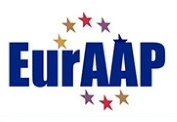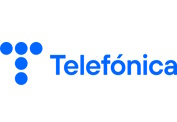Unlocking 5G-Advanced and 6G for Verticals Through Service Based Architecture,Network Exposure and Network APIs
Thursday, 5 June 2025, 11:00 – 12:30, room 1.D
Session Chair:
- Maziar Nekovee (NetworldEurope, Univ. of Sussex, UK)
- Giada Landi (FLECON-6G, Nextworks, )
The evolution from 5G Advanced to 6G is set to revolutionize digital services by enabling ultra-flexible, intelligent, and open networks that cater to diverse vertical industries. At the heart of this transformation are Service-Based Architecture (SBA) and Network Exposure Function (NEF), which provide a modular, programmable, and API-driven approach to network service delivery. These technologies will play a pivotal role in 6G, ensuring seamless interoperability, automation, and integration across heterogeneous networks and industry ecosystems. A key factor in realizing this vision is the adoption of these advancements by vertical industries such as manufacturing, automotive, healthcare, satellite and others. High take-up by verticals will be essential for maximizing the economic and societal impact of 6G, fostering ecosystem-wide collaboration, and accelerating the deployment of industry-specific applications. However, several challenges must be addressed to unlock their full potential, including:
- Techno-Economic Viability and Business Models.
- Interoperability and Standardization
- Security and Trust.
- SBA and NEF integration with edge computing frameworks and federated cloud infrastructures
- Leveraging AI-native architectures in 6G/SBA and NEF evolution
This special session will provide a platform for leading experts, researchers, industry, and SME stakeholders to discuss the latest advancements in 5G and towards 6G SBA and network exposure. Featuring insights from the following Networld Europe, 6GIA/TIM, ETSI ENI ISG , and the 6G SNS Project TrialsNet, ENVELOPE, AMAZING-6G, FLECON-6G and ETSI ENI ISG. Consequently, the session aims to deliver to the audience a highly comprehensive overview on techno-economics and future evolution in standards, as well as showcase cutting-edge research, real-world trials, and key findings from European 6G SNS projects. By fostering collaboration between academia, industry, and standards bodies, this session aims to shape the future of 6G service enablement, openness, and programmability, ensuring that SBA and NEF drive innovation across verticals and emerging digital ecosystems.
Programme
11:00 – 11:10: Welcome, Prof. Rui Aguiar & Prof. Maziar Nekovee, Networld Europe
11:10 – 11:20: Keynote: Raffaele de Peppe, 6GIA and TIM
Title of the talk:
A Techno-Economic Perspectives on Service Based Architecture, Network Exposure and Network APIs
Mobile industry is undergoing profound changes triggered by network innovation, competing technologies for core services and new players. Horizontal and vertical competition have caused a rapid decrease in mobile ARPUs putting mobile operators under severe financial pressure and undermining their capability to invest in new network technologies such as 5G and 6G which need high level of CAPEX an OPEX. Operators are exploring new paths for monetisation and cost reduction leveraging new technologies such as AI or satellite connectivity. Revision of the regulatory framework though the Digital Network Act may have positive impacts on the European industry.
While mobile operators struggle to reach fair returns on investments, mobile technologies have a huge socio-economic impact in Europe. According to GSMA the mobile industry contribution to the EU GDP is 5% and is accountable for 3,3 million jobs.
Net API is a new opportunity for mobile operators to monetize network assets. Network APIs opened to the developer ecosystem may trigger a new wave of service innovation coupled with a fair business model based on in network capabilities rather than over the top services. The overall business architecture for Network APIs reflects the successful roaming model that allowed fair interconnection of network to offer mobile voice and data services worldwide.
11:20 – 11:30: Talk by Andreas Gavrielides, imec/University of Antwerp
Title of the talk:
Network exposure for advanced Smart Crowd and Smart Traffic management applications: experimental results from TrialsNet project
TrialsNet introduces the design and validation of an enhanced Zero-Touch Service Management (ZSM) framework for energy-aware orchestration in distributed B5G infrastructures. The proposed architecture combines programmable orchestration logic with network exposure mechanisms to enable autonomous, context-driven service management across heterogeneous edge-cloud environments. Real-time performance and energy metrics, exposed via standardized APIs, guide orchestration flows for workload placement, scaling, and QoS adaptation, supporting sustainability and low-latency requirements in mission-critical domains such as tele-operated driving.
To support interoperability and programmability, the framework adopts emerging paradigms such as 3GPP CAPIF for unified service exposure and CAMARA-compliant APIs for accessing quality and context information. This allows vertical applications to interact securely with the orchestration layer, and to dynamically request Quality on Demand (QoD), trigger application-level adaptations, or influence orchestration policies based on energy constraints. The integration of exposure control and access federation is key to enabling cross-domain orchestration and aligning with intent-based service management models.
The solution was validated across real-world testbeds, demonstrating reduced orchestration overhead, consistent energy optimization, and responsiveness under constrained conditions. These results position the framework as a foundational building block for programmable, autonomous, and sustainable orchestration in 6G networks, where network exposure and energy-awareness must be tightly coupled to meet future vertical demands.
11:30 – 11:40: Talk by Maziar Nekovee, 6G Lab, University of Sussex
Title of the talk:
Enabling On-demand Guaranteed QoS for Real Time Video Streaming from Vehicles in 5G Advanced with CAPIF & NEF APIs
This paper presents the design and implementation of a Proof of Concept (PoC) that demonstrates how 5G Advanced Network Functions can be integrated with the Common API Framework (CAPIF) to support enhanced connectivity for automotive applications. The PoC shows the continuous monitoring of the mobile network performance and the on-demand and dynamic adaptation of Quality of Service for selected vehicular video streaming traffic flows using standard 3GPP Network Exposure Function APIs exposed via CAPIF. Moreover, traffic flows are redirected to the edge to improve latency and optimize network resource utilization. This works was carried out in collaboration with Honda R&D Europe (UK) and Nextworks.
11:40 – 11:50: Talk by Konstantinos V. Katsaros, Institute of Communication & Computer Systems (ICCS)
Title of the talk:
Network exposure for Connected and Automated Mobility (CAM) Services: insights from the ENVELOPE project
Network exposure increasingly emerges as a means to achieve the seamless integration of vertical services with the underlying network. The ENVELOPE projects explores this evolution path, for the particular case of the Automotive sector and related CAM services, by delivering appropriate interfaces that: i) expose network capabilities to the vertical service, ii) provide vertical-information to the network; iii) allow vertical services to dynamically request and modify certain network aspects. A series of technical enablers enhance network capabilities offering advance vertical support through the established interfaces e.g., predictive QoS, multi-connectivity, Quality-on-Demand, edge service migration, to name a few. In this talk, we describe the ENVELOPE advances, shedding light on the interaction of the network with the vertical services, with a particular focus on the Automotive sector.
11:50 – 12:00: Talk by Andreas Georgakopoulos, Panagiotis Demestichas (WINGS ICT Solutions)
Title of the talk:
AMAZING-6G: APIs and frameworks for verticals
AMAZING-6G proposes a novel set of 14 use cases in the domains of Healthcare, Public Safety, Energy and Transport (including Rail) which will be showcased in large-scale trials and pilots across Europe. Innovative technology enablers are planned to be developed and tested in the areas of Communications, Compute-as-a-Service, Applications and AI, IoT and localization. Furthermore, the significance of large-scale trials in B5G/6G networks lies not only in their ability to validate the technical capabilities of the technology but also in their capacity to unveil new use cases and applications that were previously inconceivable. As we move towards a world where the Internet of Things (IoT), augmented reality, and artificial intelligence play central roles in our daily lives, these trials provide a unique opportunity to explore the potential of B5G/6G in fostering innovative solutions across various sectors, from healthcare and transportation to utilities and public/environment safety.
Framed in this context, APIs and frameworks for verticals will ensure seamless user experience and accelerate technology development and application interoperability in different domains. There is also a dedicated task in AMAZING-6G which oversees the identification, design and development of application enablers, and facilitates the integration of developed application enablers in the trials and pilots. The addressed application enablers include both network exposure APIs to application developers as well as advanced AI/ML functions exposed in as-a-Service mode to facilitate the design and implementation of applications for various domains.
12:00 – 12:10: Talk by Giada Landi, Nextworks
Title of the talk:
Network APIs for beyond communication services: Digital Twins and AI/ML as a Service (FLECON-6G)
FLECON-6G introduces an innovative architecture aligned with the vision of an “Intelligent 6G Network of Networks” built on three core pillars: trustworthy native AI, zero-touch automation, and the integration of Network Digital Twins. At its core lies a collaborative, fully distributed “Network of Networks” framework that spans scalable, multi-technology, multi-domain, and multi-stakeholder infrastructures. These infrastructures expose programmable network services enhanced with AI/ML, closed loops and Network Digital Twin capabilities, delivered in an as-a-Service model.
Building upon and extending APIs from TMForum, GSMA OPG, and CAMARA initiatives, the FLECON-6G architecture promotes infrastructure sharing and dynamic service composition across MNOs, micro-operators, and other specialized providers. On the northbound interface, an intent-driven smart marketplace goes beyond conventional network and edge/cloud APIs to offer vertical applications enriched capabilities. This allows developers and service providers to define business intents that request advanced, beyond-connectivity services, composed from intelligent network elements.
Applications will gain access to AI/ML services for ML models discovery, training, validation, and inference, leveraging distributed datasets and AI agents dynamically deployed across tailored network and service topologies. Open interfaces will support interactions with deeply customizable, multi-layer closed loops and digital twins, enabling offloading of application logic and enhancing automation and adaptability across the entire system.
12:20 – 12:30: Keynote: Xueli An, Huawei Technologies Duesseldorf GmbH
Title of the talk:
Agentic AI enabled Next Generation Mobile Communication Network Architecture – Results and perspective from ETSI ENI ISG
The rapid development of the AI technologies in the past year has generated a profound impact on the path of next generation network architecture. AI as a network optimization enabler will have no doubt to play the driving role for the networks evolution to achieve higher network efficiency and contribute the carbon net-zero. However, the capability of the emerging AGI, will further allow us to fundamental change the network architecture and operation. This talk presents the agentic-AI based network architecture design (based on the study from ETSI ENI ISG, e.g. WI051), in the view that agentic-AI will be the foundation for the network creation and operation rather than the optimization tool for the current network architecture, in this case, we can achieve the true automation and network creation in the sense of application driven networks and to further simplify the operation of the mobile communication core networks.








